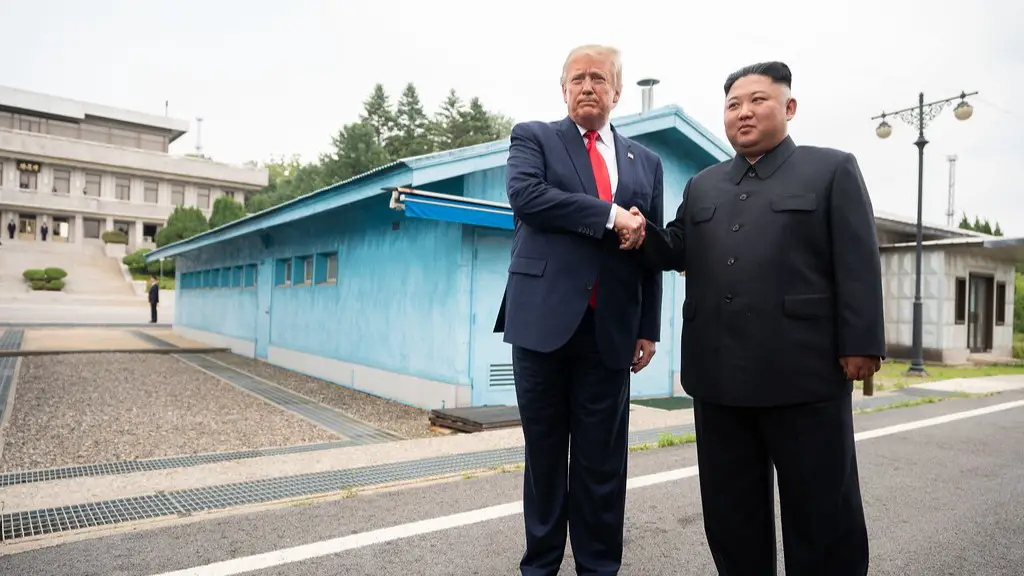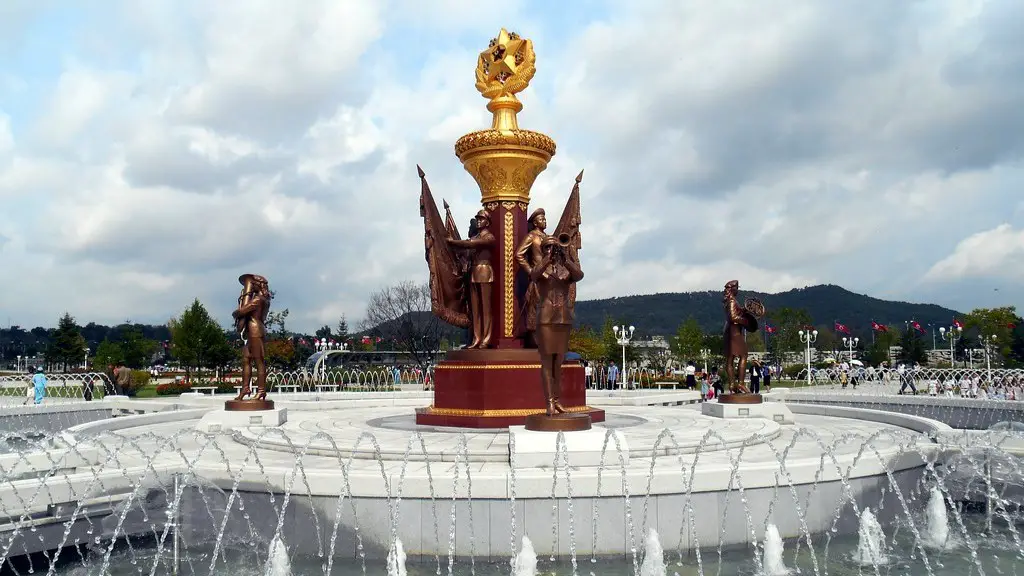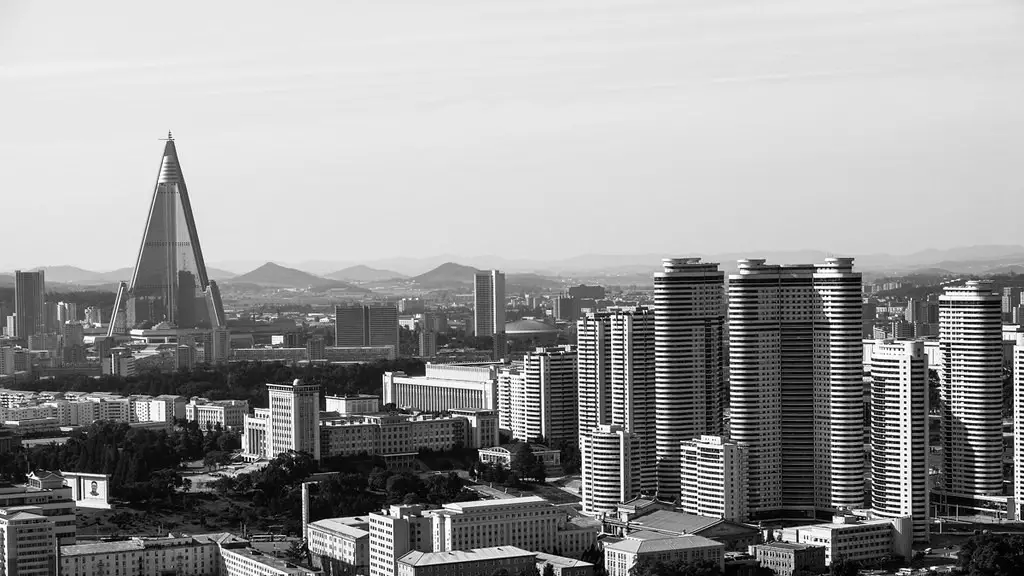State of Established Conflict
Established tensions between North and South Korea have prevented the two countries from working together. Tensions between the two have grown since the Korean War in 1950, when they were divided into two countries along the 38th Parallel. In the decades since, North Korea has continued to distance itself from the international community and South Korea has developed into a thriving democracy and economic powerhouse. In recent years, North Korea’s nuclear weapons program has deepened the rift between the two countries and heated tensions between them, making cooperation even more difficult. As a result, both countries have been unable to bridge the divide between them.
The United Nations has been drawn into the situation, and in 2017, the UN Security Council imposed a series of increasingly harsh sanctions on North Korea in an effort to halt the country’s nuclear and ballistic missile programs. As these sanctions take effect, the North Korean government has become increasingly isolated and the country’s economy has suffered. This has added to the tensions between North Korea and the South.
The ongoing conflict between North and South Korea has caused a great deal of suffering for the people of both countries. The economic sanctions have resulted in food shortages, economic hardship, and other difficulties for all Koreans, further complicating the situation and preventing the two sides from working together. In addition, South Koreans, who generally regard North Koreans as a threat to their safety, have become increasingly afraid of their northern neighbors in recent years. As a result, trust between the two countries has eroded, making the prospect of working together nearly impossible.
Hopes for a Negotiation
The situation in the Korean peninsula has been a source of international concern for many years, but there have been recent signs of progress. In 2018, North Korea and South Korea took a significant step forward when they agreed to re-establish diplomatic ties after nearly a decade of hostility. The two countries have since held several diplomatic meetings, including the meeting between North Korean leader Kim Jong Un and South Korean President Moon Jae-in in April 2018. These meetings have provided a glimmer of hope to those hoping for greater cooperation between the two countries.
In 2019, the US and North Korea also held a historic summit in Singapore, during which US President Donald Trump and North Korean leader Kim Jong Un agreed to denuclearize the Korean peninsula. While progress has been slow, the two sides have held two subsequent meetings and have demonstrated a willingness to continue negotiations. As a result, there is now hope that North and South Korea could begin to work together to achieve peace and stability in the region.
Despite the progress made between North and South Korea in recent years, it is still unclear what will prevent the two countries from working together in the future. One issue is the proliferation of nuclear weapons, which has resulted in mistrust between the two countries. In addition, the bitter memory of the Korean War and the continuing presence of US military personnel on the Korean peninsula have also served to make cooperation between the two sides more difficult.
Potential Solutions
International diplomacy is one approach that could bring North Korea and South Korea closer together. For example, the US and China have actively pursued diplomatic channels with North Korea, and these channels have contributed to North Korea’s agreement to denuclearize the Korean peninsula. International negotiations are also taking place, such as the talks between North Korea and South Korea that took place in 2018. These talks have been seen as a positive step forward, as they indicate a willingness on both sides to find a peaceful resolution to the conflict.
Ultimately, the goal of both countries should be to resolve the conflict peacefully. To do so, both sides must make a sincere effort to bridge the divide between them. This could include establishing diplomatic channels and initiatives that would help to establish trust between the two countries, and it could also involve agreeing on a plan for peaceful coexistence. Such a plan could be the key to bringing about true and lasting peace on the Korean peninsula.
Military Stand-off
Although North and South Korea have taken steps towardswar, such as signing a peace agreement in 2018, the two countries remain firmly entrenched in a military stand-off. This is due in part to the presence of US military personnel on the Korean peninsula and South Korea’s desire to preserve its own security. As a result, many analysts have suggested that North and South Korea must take further steps to reduce tensions, such as negotiating a mutual declaration ending the Korean War, before they can move forward towards true peace.
To this end, South Korea has proposed the removal of US forces from the peninsula and an overarching peace treaty that would address issues such as weapons of mass destruction, maritime boundaries, and economic integration. North Korea, however, remains opposed to these proposals, as it views them as a violation of its sovereignty. As a result, many analysts remain skeptical of the prospects for working together in the near future.
If North and South Korea are to make further progress in the future, they must find a common ground that all can agree on. This could involve recognizing each side’s security concerns, as well as finding a way to peacefully resolve matters such as North Korea’s weapons of mass destruction program. Both sides must also be willing to explore the possibility of a peaceful resolution to the conflict, without which cooperation and progress will remain difficult.
Cost of War
The conflict between North and South Korea has had a significant economic, human, and environmental impact on the region. Years of economic sanctions have taken a toll on North Korea’s economy, leading to food shortages and poverty. Meanwhile, South Korea has seen its economic growth and development hindered by the ongoing conflict. The costs of the conflict have also been felt in other ways, such as the risk of a cross-border conflict leading to a humanitarian crisis.
In addition, the ongoing conflict has threatened the environment of the Korean peninsula, with pollutants such as lead, mercury, and other heavy metals being released into the air, water, and ground. This has had a significant and lasting impact on the region, and it has exacerbated the situation between North and South Korea.
Finally, the ongoing conflict has also had a psychological impact. North and South Koreans continue to view one another as enemies, and this has created an atmosphere of mutual distrust that has been difficult to overcome. This has prevented the two countries from working together to achieve peace and stability in the Korean peninsula.
Environmental Damage
The Korean War and its aftermath has had a far-reaching impact on the environment of the Korean peninsula. Intensive military activity during the war has left a lasting legacy of environmental damage. In addition, the use of weapons of mass destruction has caused widespread contamination of the environment, and heavy metals and other pollutants continue to enter the air, water, and soil.
The environmental impact of the Korean War has had devastating consequences for the health of the region’s residents. In recent years, the South Korean government has sought to address this issue by providing assistance to people affected by environmental contamination. This includes the establishment of a special fund to help clean up contaminated sites and provide assistance to those affected. North Korea, however, has yet to take significant action to address the issue.
The environmental damage in the Korean peninsula has been created by years of war and conflict, and it will take a long time to reverse the effects. As the two countries move towards reconciliation, the environment must be a priority for both sides. They must work together to clean up the contaminated sites, and they must also commit to fighting environmental pollution in concert.
Restoration of Relations
The process of restoring relations between North and South Korea is fraught with challenges, but also with potential. In recent years, both countries have taken steps to improve their relations, and there is now hope that they could eventually agree to a peace agreement that would end their war and pave the way for closer cooperation.
For North and South Korea to work together effectively, they must first find a way to bridge their differences and work through their differences in an organized and collaborative manner. To do this, the two sides must recognize their shared history and look to common interests. This could involve reviving cultural exchanges and trade, as well as resuming diplomatic ties. It could also involve establishing a joint commission to help resolve disagreements and create lasting solutions.
Ultimately, the future of North and South Korea will depend on the willingness of both sides to make concessions and seek common ground. This could be the key to establishing lasting and meaningful relations between the two countries, potentially leading towards a lasting peace in the Korean peninsula.
Conclusion
Established tensions between North and South Korea have created a situation in which the two countries are unable to work together. Negotiations have taken place in recent years, but the two sides have yet to find a lasting solution to the conflict. In order to move closer to a resolution, North and South Korea must first find a common ground and work towards establishing trust between the two sides. This could involve the establishment of diplomatic and economic ties, as well as the resolution of environmental and security issues. Only then can the region’s residents hope for a brighter future, free from fear and conflict.




